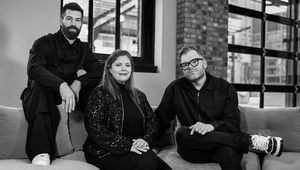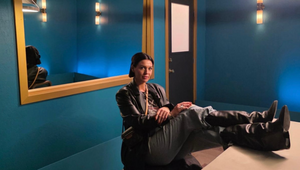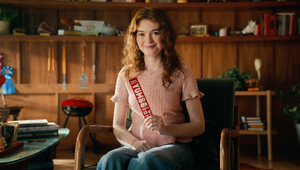
Planning for the Best: Cecelia Parrish on Why Strategy and Creative Should Work Hand-in-Hand

Growing up, Cecelia Parrish always identified with Alice from Alice in Wonderland – because, too often, she found herself following her curiosity down endless rabbit holes. This skill makes her a strategic powerhouse willing to dive deep to find the best insight. Today, Cecelia is senior strategy director at Havas Chicago, where she touches all brands.
LBB> What do you think is the difference between a strategist and a planner? Is there one?
Cecelia> Strategy is such a broad field today. There are so many different kinds of strategy brains today than when I started out - social, activation, comms, data, micro-cultures – because consumers lives, the media landscape and where brands show up today are now so much more complicated and vast, it requires a completely different skillset than it did 5, 10, 15 years ago.
I do think there is a difference though, between planners and strategists. I think of planners as being brand planners, the purveyor of a brand’s plotline. Responsible for the 30,000 foot and 10-year view of a brand and how that comes to life through not only in creative campaigns but in their product portfolio, their innovation pipeline, their market structure and how they show up in culture in a meaningful, lasting way. They are responsible for helping every member of their team and every member of the client team have a clear picture of the vision for the brand and how that vision comes to life.
I think of strategists those who have incredible superpowers in specific areas – social, comms, PR, data, gaming, etc. They help brands figure out exactly how their brand can and should be meaningful in those areas and are the architects of what that looks like.
Both are important and they’re not always mutually exclusive in my experience.
LBB> And which description do you think suits the way you work best?
Cecelia> I describe myself as a brand planner – I started my career in social but I’ve grown to love brand planning. I love trying to put all the pieces of a brand challenge together – it’s a chaotic puzzle and I live for trying to make sense of it. I love helping translate brand business challenges into creative challenges for our teams just as much as I love working with my clients on a market maturity model or portfolio architecture.
LBB> We’re used to hearing about the best creative advertising campaigns, but what’s your favourite historic campaign from a strategic perspective? One that you feel demonstrates great strategy?
Cecelia> That’s tricky, because great creative should inherently feel strategic without revealing the brief, so great creative is synonymous with great strategy for me. But one that I always love to reference is the “Listen Like You Used To” campaign from Spotify. Trying to shift the perception that Spotify is a platform only for young listeners, they used their product and data to help show people that even though their lives may have changed, their taste in music hasn’t and they can rediscover all their favorite songs through Spotify. It was so relatable and simple.
LBB> When you’re turning a business brief into something that can inform an inspiring creative campaign, do you find the most useful resource to draw on?
Cecelia> I am a proponent of looking at real life to find starting places and augmenting and validating with data, because our goal is to create creative solutions that I, as a human, am going to care about and that’s going to feel meaningful. So I always start with talking to real humans. I will be the first one to just ask random people on the street questions, start conversations with people I meet while out, just to see what they say. I also turn to TikTok a lot these days – it's a great resource to see how people are talking about things, what’s trending and what’s going on in culture that could be relevant. I read The New York Times, the Cut, Washington Post and Fast Company, but I also look at places like Reddit to see all sides of conversations.
Then I layer in data and facts to make sure that it’s something that can scale. The brands I work on are all mass-market with huge consumer bases so it’s important to find insights and cultural fodder that are hyper-meaningful to our focus audience but still able to scale where it doesn’t alienate our mass-base. So Mintel, Iconoculture, Ibis, Helixa and GWI are all go-tos, as is just digging through anything you can find on Google. The thing about the secondary research is that if I can find it, so can every other planner. Those stats and facts are made ownable by giving them meaning through a qualitative lens, to show how they matter beyond the numbers.
LBB> What part of your job/the strategic process do you enjoy the most?
Cecelia> I love so much of what I do but I love the problem-solving piece. Sometimes that happens in the beginning when I’m working on a brief, a framework or a comms plan – and sometimes it happens in the swirl as we go back and forth with revisions or questions. I love sorting through all the pieces and elements to simplify them into a single, clear thread for everyone. In the moment it feels like absolute chaos, but when you get that last piece of the puzzle, it’s so incredibly satisfying.
I also love working with my creative teams. It’s one of the best parts of the job. They are all incredible and being able to work through ideas with them is just incredibly fun.
LBB> What strategic maxims, frameworks or principles do you find yourself going back to over and over again? Why are they so useful?
Cecelia> For my creative teams, I consistently use the “get/who/to/by” framework. I love it because it forces me to be ruthless. It sharply clarifies who we are talking to, what the true problem we’re trying to solve is and exactly what the strategy is. I think the key to that framework is surrounding it with a narrative that is compelling and filled with fodder so that teams have things to jump off of. My job is to get teams really excited about the ask and this framework ensures they know exactly what we need to do.
I also am a big believer in the power of tension in strategies – back to planners being the purveyors of the plotline – every great story always has an enemy, something to fight against. And it’s 100% true in advertising that tension helps us create work that’s more meaningful, it helps us show up in unexpected but highly relevant spaces, and it helps us understand what our brand’s role is in this whole shebang.
My final principle, because I’ve spent so much of my career working in CPG, is laddering absolutely everything back to the product truth. Our brand’s products are the core manifestation of that brand, and everything that we do should be rooted in the truth of them, otherwise, what’s stopping any other brand from saying or doing the same thing. For OREO, everything we did was rooted in the truth that we were the black and white sandwich cookie that begged to be played with – our twist, lick, dunk ritual. The Stay Playful platform was born out of that product truth and every piece of work we did tied back to it in some way, meaning only OREO could do it. That’s the goal.
LBB> What sort of creatives do you like to work with? As a strategist, what do you want them to do with the information you give them?
Cecelia> Working with all creatives is one of my favorite parts of this job. I see myself as a resource for them, so it’s really about what can I do to help them. The things that I’ve valued most are when my creatives see me as their partner and bring me into the process. I’m never there to kill work but to help them see other ways in, strengthen ideas, help with the narrative of an idea that’s amazing but might seem off brief or just talk through ideas. I believe that strategies should evolve and flex throughout the creative process, to think that it’s finite after I’ve written a brief is silly. It shouldn’t go out the window, but it should change and evolve as the teams work as they often discover new ways to look at the problem. And when I’m a part of the process from start to finish, I can help update that narrative as we go along.
Strategy and creative, for me, should work hand-in-hand and support each other.
LBB> There’s a negative stereotype about strategy being used to validate creative ideas, rather than as a resource to inform them and make sure they’re effective. How do you make sure the agency gets this the right way round?
Cecelia> For me, it’s about having a strong starting point. The brief has to be interesting and clear and get teams excited for what they can do. I review every brief with my creative leads and invite them to rip it to shreds because, at the end of the day, my job is to help them get to great, effective work. If the brief isn’t doing that, I need to start over. And my job isn’t done once I brief. I’m in constant communication with our teams to help understand any challenges or changes we need to work through. A great strategy should flex and evolve throughout the creative process so that by the end, my creative teams and I have worked together to have a cohesive, strategic and creative story.
LBB> What have you found to be the most important consideration in recruiting and nurturing strategic talent?
Cecelia> Passion for being a planner. Technical skills are things that you can teach and nurture, but wanting to be a planner and truly loving the nitty gritty of our day-to-day responsibilities – that's very valuable and not something I can teach. The same goes for being a good human. Planners sit at the center of teams, working with everyone and being a resource for them all, and no matter how smart you are, no one will want to work with you if you’re an a**hole. Lastly, a hunger and desire to do great work. Planning isn’t a place for apathy. Our job is to care about absolutely everything, even when the rest of the team is burned out and over it.
LBB> In recent years it seems like effectiveness awards have grown in prestige and agencies have paid more attention to them. How do you think this has impacted on how strategists work and the way they are perceived?
Cecelia> I think there is now more pressure to use things rooted in data or push briefs toward technology-first ideas ,which have their place, but we can’t lose sight of what problem we’re trying to solve first. We must start with the problem and then we can layer in interesting ways to use data or emerging tech.
LBB> Do you have any frustrations with planning/strategy as a discipline?
Cecelia> I once had a creative lead who I adored say that strategy is the scaffolding that surrounds the building during construction. It’s critical and everything would fall apart if it went away before things were done. But when it is all said and done, the scaffolding vanishes and no one even remembers it was there. That can be the hard thing about being a planner, but if you have the right teams, your work never goes unnoticed internally, even if it’s not something the rest of the world sees.
Also, my parents have no idea what I do and it’s impossible to explain it in a way that doesn’t sound kind of lame – that's my biggest frustration, haha.
LBB> What advice would you give to anyone considering a career as a strategist/planner?
Cecelia> Think about why you want to go into it, truly, beyond wanting to be in advertising. What is it about strategy that makes you think “that’s for me?” There are a lot of planners/strategists in our business, but I’d argue that there aren’t nearly enough great ones who truly want to be planners.












